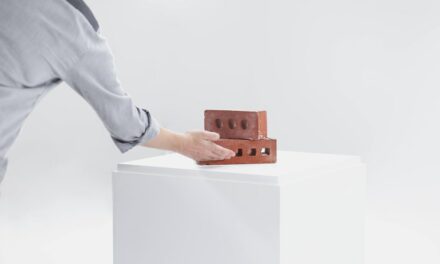Minimalism is a lifestyle approach that emphasises simplicity, clarity and purpose. It involves living with only essential items that provide value, whilst eliminating excess. Minimalism extends beyond physical decluttering to include mental and emotional simplification.
The philosophy encourages individuals to relinquish materialistic desires and focus on experiences and relationships. Minimalism promotes intentional living and mindful decision-making regarding possessions, activities and social connections. It advocates finding contentment in one’s current circumstances rather than perpetually seeking more.
Minimalism is not solely about reduction; it aims to create space for meaningful aspects of life. It involves prioritising elements that bring joy and purpose whilst discarding the superfluous. The concept of minimalism is highly individualised and can manifest differently for each person.
For some, it may entail downsizing one’s living space, whilst others might simplify their wardrobe or reduce commitments. Ultimately, minimalism seeks to create room in one’s life for personally significant pursuits, whether that involves following a passion, spending time with family and friends, or cultivating inner peace and satisfaction.
Summary
- Minimalism is a lifestyle choice that focuses on simplicity, decluttering, and prioritising what is truly important.
- Minimalism originated in the 1960s as an art movement and has since evolved into a popular lifestyle trend.
- To apply Minimalism to your lifestyle, start by decluttering your physical and mental space, and focusing on quality over quantity.
- The benefits of Minimalism include reduced stress, increased focus, and a greater appreciation for the things that truly matter.
- Minimalism has had a significant impact on art, design, fashion, and architecture, with its clean lines, simplicity, and focus on functionality.
The history and origins of Minimalism
Artistic Origins
In art, minimalism emerged as a movement in the 1960s, with artists such as Donald Judd and Frank Stella creating works that focused on simple geometric forms and basic colours. This movement was a reaction against the complexity and emotionalism of abstract expressionism, and sought to strip art down to its essential elements.
Design and Architecture
Minimalist art aimed to create a sense of purity and clarity, allowing the viewer to experience the work directly without any distractions. In the realm of design and architecture, minimalism has its origins in the early 20th century with the Bauhaus movement in Germany. Bauhaus designers sought to create functional and simple designs that were accessible to all. This approach to design influenced many aspects of modern architecture and interior design, with its emphasis on clean lines, open spaces, and minimal ornamentation.
A Global Phenomenon
The minimalist design philosophy has since spread globally, influencing everything from furniture to technology. In recent years, minimalism has gained popularity as a lifestyle choice, with influencers such as Marie Kondo promoting the idea of decluttering and simplifying one’s life. The minimalist lifestyle has been embraced by many as a way to combat consumerism and find greater meaning and satisfaction in life.
Applying Minimalism to your lifestyle

Applying minimalism to your lifestyle can be a transformative experience that leads to greater clarity, purpose, and contentment. One of the first steps in embracing minimalism is decluttering your physical space. This can involve going through your belongings and getting rid of anything that no longer serves a purpose or brings you joy.
It’s about being intentional with what you choose to keep, and letting go of the excess that only serves to weigh you down. Beyond decluttering your physical space, minimalism also involves decluttering your schedule and commitments. It’s about prioritising the activities and relationships that bring value to your life, and learning to say no to things that don’t align with your values or goals.
This can mean cutting down on social obligations, simplifying your work life, or even taking a step back from technology and social media. Embracing minimalism also means being mindful of your consumption habits. It’s about being intentional with your purchases and avoiding unnecessary spending.
This can involve adopting a more sustainable approach to shopping, focusing on quality over quantity, and investing in items that will last a lifetime rather than buying into fast fashion or disposable goods.
The benefits of Minimalism
Embracing minimalism can have a wide range of benefits for both your mental and physical well-being. By decluttering your physical space, you can create a more peaceful and calming environment that promotes relaxation and reduces stress. A minimalist home can also be easier to maintain and keep clean, freeing up time for more meaningful activities.
Minimalism can also lead to greater financial freedom, as it encourages you to be more mindful of your spending habits and avoid unnecessary purchases. By prioritising quality over quantity, you can save money in the long run and invest in items that truly bring value to your life. On a deeper level, minimalism can lead to greater mental clarity and emotional well-being.
By letting go of materialistic desires and simplifying your life, you can focus on what truly matters to you and find greater contentment in the present moment. Minimalism encourages mindfulness and gratitude, helping you to appreciate the simple pleasures in life and find joy in the everyday.
Minimalism in art and design
Minimalism has had a profound impact on the world of art and design, influencing everything from visual art to architecture and interior design. In visual art, minimalism is characterised by its use of simple geometric forms, basic colours, and clean lines. Artists such as Donald Judd, Frank Stella, and Agnes Martin were pioneers of the minimalist art movement, creating works that aimed to strip art down to its essential elements.
In architecture and interior design, minimalism is characterised by its emphasis on clean lines, open spaces, and minimal ornamentation. Minimalist architecture often features simple geometric forms, neutral colours, and an emphasis on natural light. This approach to design creates a sense of calm and tranquillity, allowing for a greater focus on the space itself rather than any decorative elements.
Minimalist design has also had a significant impact on product design and technology. Companies such as Apple have embraced minimalist design principles in their products, creating sleek and simple designs that are both functional and aesthetically pleasing. The minimalist approach to design has become synonymous with modernity and sophistication, influencing everything from furniture to fashion.
Minimalism in fashion and architecture

The Sustainable Approach
This approach to fashion promotes sustainability and encourages consumers to invest in quality pieces that will last for years to come. Minimalist fashion also promotes a more mindful approach to dressing, encouraging individuals to focus on what truly brings them joy rather than following trends or succumbing to fast fashion. By embracing a minimalist wardrobe, individuals can create a sense of ease and simplicity in their daily lives, while also reducing their environmental impact.
Architecture and Design
In architecture, minimalism has had a significant impact on modern design principles. Minimalist architecture is characterised by its emphasis on clean lines, open spaces, and minimal ornamentation. This approach to design creates a sense of calm and tranquillity, allowing for a greater focus on the space itself rather than any decorative elements.
The Benefits of Minimalism
By adopting a minimalist approach to fashion and design, individuals can reap numerous benefits. From reducing waste and promoting sustainability to creating a sense of calm and tranquillity, minimalism offers a unique perspective on the way we live our lives. By embracing minimalism, individuals can simplify their daily lives, reduce their environmental impact, and focus on what truly matters.
Tips for embracing Minimalism in your daily life
Embracing minimalism in your daily life can be a transformative experience that leads to greater clarity, purpose, and contentment. Here are some tips for incorporating minimalism into your lifestyle: 1. Declutter your physical space: Go through your belongings and get rid of anything that no longer serves a purpose or brings you joy.
Be intentional with what you choose to keep, and let go of the excess that only serves to weigh you down. 2. Simplify your schedule: Prioritise the activities and relationships that bring value to your life, and learn to say no to things that don’t align with your values or goals.
Cut down on social obligations, simplify your work life, or take a step back from technology and social media. 3. Be mindful of your consumption habits: Adopt a more sustainable approach to shopping by focusing on quality over quantity.
Avoid unnecessary spending and invest in items that will last a lifetime rather than buying into fast fashion or disposable goods. 4. Embrace mindfulness: Practice gratitude and appreciation for the simple pleasures in life.
Focus on what truly matters to you and find joy in the present moment. By incorporating these tips into your daily life, you can experience the many benefits of minimalism and create a more peaceful and fulfilling existence for yourself.
If you are interested in learning more about art movements, you may want to check out an article on Pop Art. This movement, which emerged in the 1950s, challenged traditional ideas about art by incorporating popular culture and consumerism into its works. Like Minimalism, Pop Art sought to break away from the conventions of the art world and create something new and innovative. Understanding the context and influences of different art movements can provide valuable insight into the development of Minimalism and its impact on the art world.
FAQs
What is Minimalism?
Minimalism is a lifestyle that focuses on living with less. It involves decluttering and simplifying your life, focusing on what is truly important and getting rid of excess possessions and distractions.
What are the key principles of Minimalism?
The key principles of Minimalism include decluttering, simplifying, focusing on what adds value to your life, and living intentionally. It is about prioritising experiences and relationships over material possessions.
How can Minimalism benefit your life?
Minimalism can benefit your life by reducing stress, increasing happiness, improving mental clarity, saving money, and creating more time and space for the things that truly matter to you.
How do you start living a Minimalist lifestyle?
To start living a Minimalist lifestyle, you can begin by decluttering your possessions, evaluating your priorities, setting boundaries with technology and social media, and being mindful of your consumption habits.
Is Minimalism just about decluttering and owning fewer possessions?
While decluttering and owning fewer possessions are important aspects of Minimalism, it is also about simplifying all areas of your life, including your schedule, relationships, and mental clutter. It is about focusing on what truly adds value to your life.
Can anyone embrace Minimalism?
Yes, anyone can embrace Minimalism, regardless of their age, income, or living situation. It is a flexible lifestyle that can be adapted to suit individual needs and preferences.




